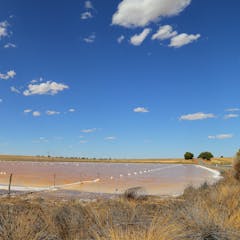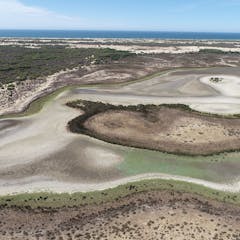
Articles on Groundwater
Displaying 1 - 20 of 94 articles

Declining precipitation, climate change and governance failures will drive water flow scarcity in 2024 with serious implications across Western Canada.

We’ve known about dryland salinity for a century. But while we’ve made progress, the problem hasn’t yet been solved.

A new study shows how thawing permafrost and intensifying storms will change how water moves into and through Arctic rivers.

If not properly managed, heavy metals such as arsenic can accumulate in landfills and leach into soils and groundwater.

Rapid and accelerating groundwater level declines are widespread in dry climates where groundwater is used for irrigation. But some communities have found ways to turn things around.

What happens underground doesn’t stay underground. If we overexploit groundwater and kill off its species, we put surface species – including us – at risk.

As the war between Hamas and Israel grinds forward, two experts explain how Israelis and Palestinians have cooperated to tackle their region’s water challenges.

Saltwater intrusion is bad for human health, ecosystems, crops and infrastructure. Here’s how seawater can move inland, and why climate change is making this phenomenon more frequent and severe.

Better monitoring of groundwater is important for sustainable management.

South-west Australia relies on groundwater for three-quarters of its water use. But a new study of the region’s caves has found a drying climate is having a dramatic impact on this precious resource.

We’ve blown past the safe and just limit for vital Earth systems, from climate change to the biosphere and the use of fertilisers and freshwater. For humans to thrive means living in safe limits

Aquifers are highly prevalent across Africa – but they’re not always going to be usable.

The slow release of information about the chemical spill and results of air and water tests have left many questions about the risks and long-term impact.

Urban infrastructure was designed to take stormwater out to the ocean quickly. Now, California needs that precious water.

There are fears the Northern Territory government will allow gas and other industries to extract substantially more water from the environment than is currently allowed.

While we know how global changes in freshwater pose risks to humans and ecosystems, we know less about how people and ecosystems will respond to these global freshwater challenges.

High intensity rain has actually increased, which is topping up underground water stores.

New regulations for protecting water resources during oil exploration are inadequate and should be reviewed.

The UK is no stranger to drought – especially southern England.

Accra has become susceptible to floods due to encroachment on wetlands.





